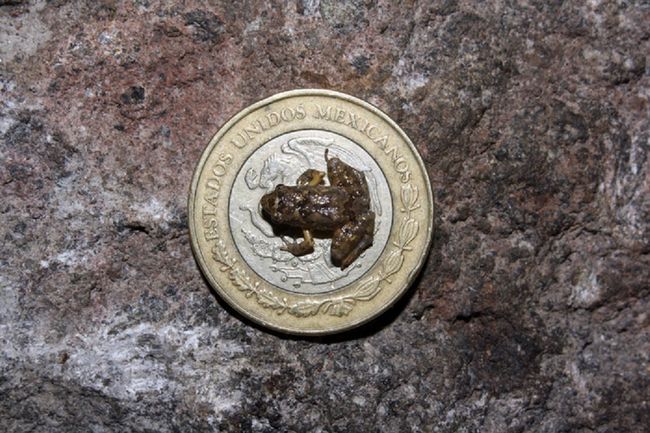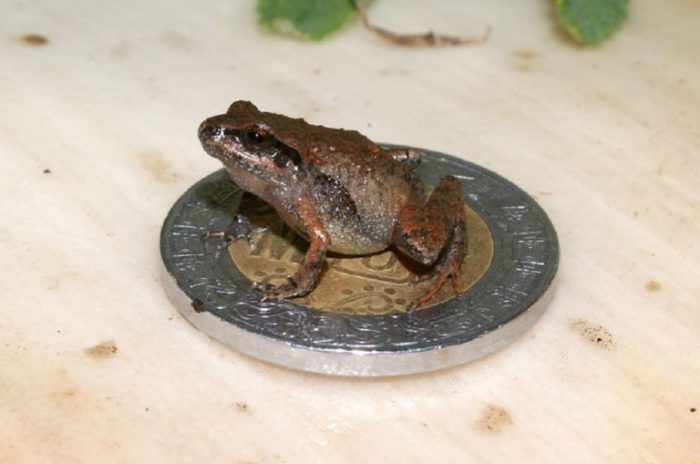May 7 to 22 is Science Odyssey, a celebration of all things science! OWLconnected is recognizing this two-week event with lots of science content, as well as with an amazing contest, presented by our friends at the Natural Sciences and Engineering Research Council of Canada (NSERC). Details are at the end of this post—be sure to enter!
Three quarters left to go...
Scientists constantly tell us that we still don't know much about the diversity of life on Earth. It seems absurd when you consider that we have classified over 1.7 million different species of plants and animals already.
But experts estimate that there are still around five million more species left to be found! We're only a quarter of the way there!
But thanks to a new study out of Mexico, biologists have gotten a tiny bit closer to their goal of learning about all life on Earth. And we do mean a tiny bit.
That's because six new frog species have been found—each of them are the size of a coin, and one, Craugastor candelariensis, is now considered the country's smallest frog. Pleased to meet you, little guys!
Hidden treasures

And this still isn't even the smallest one! Meet Craugastor rubinus. (Jeffrey W. Streicher / The Natural History Museum, London)
There are two main reasons why life on Earth is still so hard to find. The planet is huge (and full of remote, rarely explored places), and many of the species are small.
These new frogs definitely fit the bill. The species are Craugastor bitonium, Craugastor candelariensis, Craugastor cueyatl, Craugastor polaclavus, Craugastor portilloensis, and Craugastor rubinus. The name cueyatl actually means 'frog' in the Indigenous language of Nahuatl, which is spoken where the species were discovered.
Tiny and brown, these miniature frogs live on the floor of dense forests, tucked among leaves and other fallen plant life. They are the biological equivalent of hidden treasures. But together, a team of researchers from the University of Cambridge, London's Natural History Museum, and the University of Texas at Arlington have brought them into the light.
More to still discover
"Their lifestyle is utterly fascinating," said Tom Jameson in a statement about the discovery. He is a researcher at the University of Cambridge, and helped to lead the study. "These frogs live in the dark, humid leaf litter of the forests, which is like a secret world—we don't really know anything about what goes on there."
We could say this about a lot of places—and species—on Earth. It's made more complicated when animals like these new frog species are not only small, but very similar to other species that we already know.
"Frogs in the group known as Craugastor are very difficult to tell apart," Jameson added, "so scientists have long suspected that more species may exist. We're really excited to have discovered six new Craugastor species that are completely new to science."
That's the amazing thing about exploring life on Earth. Nearly two million species found and we're still learning more all the time!
Contest alert
Don't forget to enter the Science Odyssey Contest! CLICK HERE TO ENTER.

 One of the new species, Craugastor cueyatl, placed on a Mexican 10 pesos coin. (Jeffrey W. Streicher / The Natural History Museum, London)
One of the new species, Craugastor cueyatl, placed on a Mexican 10 pesos coin. (Jeffrey W. Streicher / The Natural History Museum, London)









